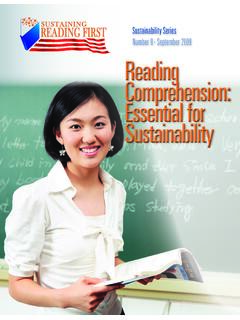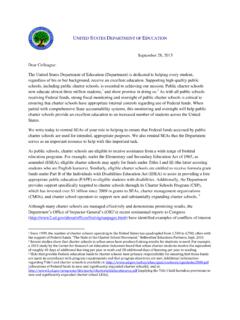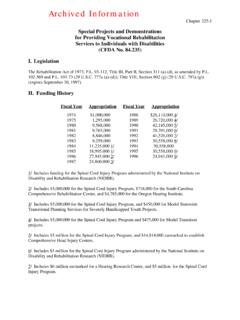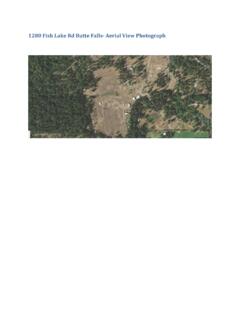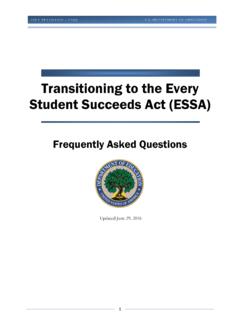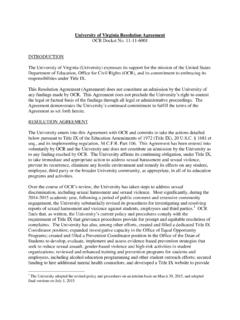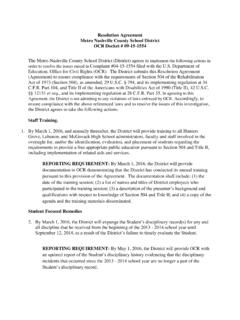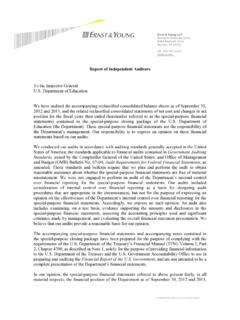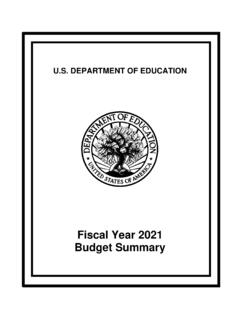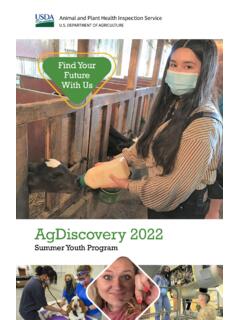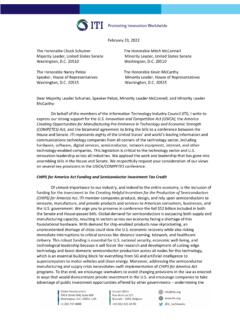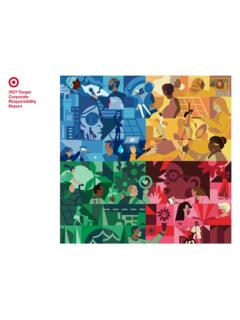Transcription of The State of Racial Diversity in the Educator Workforce
1 THE State OF Racial DIVERSITYIN THE Educator WORKFORCE2016 iTHE State OF Racial Diversity IN THE Educator WORKFORCEJULY 2016 POLICY AND PROGRAM STUDIES SERVICEOFFICE OF PLANNING, EVALUATION AND POLICY DEPARTMENT OF EDUCATION Department of EducationJohn B. King, Jr. SecretaryOffice of Planning, Evaluation and Policy Development Amy McIntosh Delegated Duties of Assistant Secretary Policy and Program Studies Service Jennifer Bell-Ellwanger DirectorJuly 2016 This report is in the public domain.
2 Authorization to reproduce it in whole or in part is granted. While permission to reprint this publication is not necessary, the citation should be Department of Education, Office of Planning, Evaluation and Policy Development, Policy and Program Studies Service, The State of Racial Diversity in the Educator Workforce , Washington, 2016. This report is available on the Department s website at of Alternate FormatsRequests for documents in alternate formats such as Braille or large print should be submitted to the Alternate Format Center by calling 202-260-0852.
3 Or by contacting the 504 coordinator via e-mail at to Limited English Proficient PersonsIf you have difficulty understanding English you may request language assistance services for Department information that is available to the public. These services are available free of charge. If you need more information about interpretation or translation services, please call 1-800-USA-LEARN (1-800-872-5327) (TTY: 1-800-437-0833), or e-mail us at Or write to Department of Education, Information Resource Center, LBJ Education Building, 400 Maryland Ave.
4 SW, Washington, DC 20202. iiiCONTENTSList of Figures ..ivIntroduction ..1 Summary of Findings ..3 Racial Diversity of Students and Educators ..5 Racial Diversity of Students ..5 Racial Diversity of Teachers ..6 Racial Diversity of Principals.. 7 Educator Pipeline.. 9 Postsecondary Enrollment.. 10 teacher Preparation Programs.. 13 Enrollment at Historically Black Colleges and Universities (HBCUs).. 16 Alternative-Route teacher Preparation Program Students ..17 Postsecondary Completion.
5 18 Entering the teacher Workforce ..22 Bachelor s Degree Graduates.. 22 New Teachers ..25 teacher Workforce ..27 teacher Retention ..29 Conclusion ..31 Endnotes.. 33ivFIGURES Figure 1. Percentage distribution of students enrolled in public elementary and secondary schools, by race/ethnicity: Fall 2002, fall 2012, and fall 2024 ..5 Figure 2. Percentage distribution of teachers in public elementary and secondary schools, by race/ethnicity: Selected years, 1987 88 through 2011 12.
6 6 Figure 3. Percentage distribution of public school principals, by race/ethnicity: Selected years 2003 04, 2007 08, and 2011 12.. 8 Figure 4. Key points along the Educator pipeline ..9 Figure 5. Percentage of enrollment for high school graduates and bachelor s degree students, by race/ethnicity: 2011 12.. 10 Figure 6. Percentage distribution for bachelor s degree students, by major and race/ethicnicity: 1999 2000 and 2011 12.. 11 Figure 7. Percentage distribution of master s degree students, by field of study and race/ethnicity: 1999 2000 and 2011 12.
7 12 Figure 8. Percentage of bachelor s degree students majoring in education, by race/ethnicity: 2011 12 ..12 Figure 9. Percentage of master s degree students enrolled in an education-related field of study, by race/ethnicity: 2011 12.. 13 Figure 10. Black enrollment in teacher preparation programs, by State where program is located: 2013 14.. 14 Figure 11. Hispanic enrollment in teacher preparation programs, by State where program is located: 2013 14 ..14 Figure 12. Percentage distribution of all enrollees in IHEs with teacher preparation programs versus the distribution of enrollees at those IHEs who are in a teacher preparation program, by race/ethnicity: 2012 13.
8 15 Figure 13. Share of teacher preparation program enrollment in HBCUs: 2012 13.. 17 Figure 14. Percentage distribution for types of teacher preparation programs, by race/ethnicity: 2012 13.. 18 Figure 15. Cumulative persistence and attainment by 2008 09 for bachelor s degree students who began postsecondary education in 2003 04, by major and race/ethnicity.. 19vFigure 16. Share of awards conferred for education majors and all majors, by institution type: 2012 13.
9 20 Figure 17. Share of education major awards conferred, by MSI/HBCU status: 2012 13 ..21 Figure 18. Percentage of education degrees awarded to white students compared to percentage of non-education degrees awarded to white students, by institution type: 2012 13 ..22 Figure 19. Percentage distribution of 2007 08 bachelor s degree recipients who reported applying for k 12 teaching position as of 2012, by race/ethnicity.
10 23 Figure 20. Percentage of 2007 08 bachelor s degree recipients who reported applying for a k 12 teaching position as of 2012, by race/ethnicity.. 24 Figure 21. Percentage distribution of 2007 08 bachelor s degree recipients for all majors, for those who majored in education, and for those who worked as a k 12 teacher , by race/ethnicity: 2012.. 25 Figure 22. Percentage distribution of public school teachers for all teachers and teachers with three or fewer years of experience, by race/ethnicity: 2012.
